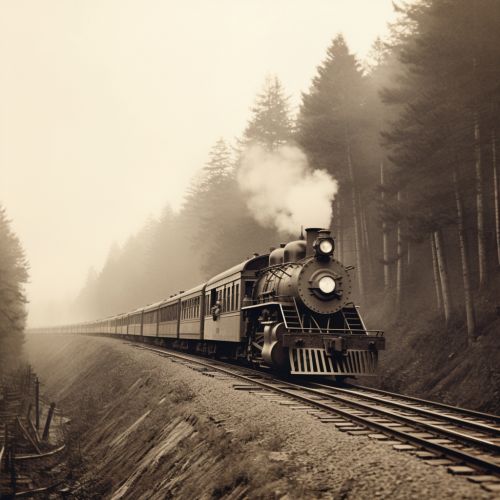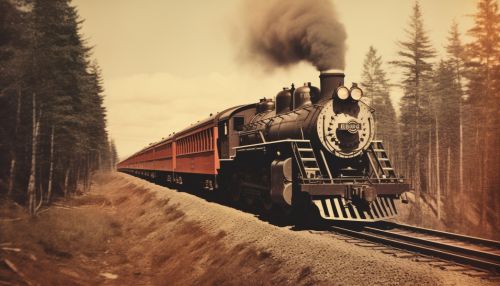Great Northern Railway (U.S.)
History
The Great Northern Railway (GNR) was an American Class I railroad. Running from Saint Paul, Minnesota, to Seattle, Washington, it was the creation of 19th-century railroad entrepreneur James Jerome Hill and was developed from the Saint Paul & Pacific Railroad. The Great Northern's (GN) route was the northernmost transcontinental railroad route in the U.S. and was north of the Northern Pacific Railway (NP). It was largely along this line that the Lewis and Clark journeyed to the Pacific.


Construction
In 1889, Hill organized the Great Northern Railway from the bankrupt St. Paul and Pacific and Minneapolis and St. Cloud railroads. The Great Northern completed its link to the Pacific coast in 1893 along the right-of-way of the Northern Pacific's surveyed route, crossing Marias Pass. The Great Northern established stations and terminals in major cities, such as Chicago, and created spur lines to existing Northern Pacific stations.
Operations
The Great Northern Railway operated a number of named passenger trains, including the Empire Builder, the Western Star, the Gopher, the Badger, and the International, among others. The Great Northern also operated a variety of freight services, including grain, lumber, and coal trains. The railroad was known for its efficient operations and excellent customer service.
Merger and Legacy
The Great Northern Railway, along with the Northern Pacific Railway, the Chicago, Burlington and Quincy Railroad, and the Spokane, Portland and Seattle Railway, were merged to form the Burlington Northern Railroad in 1970. The Burlington Northern Railroad was subsequently merged with the Santa Fe Railway to form the Burlington Northern and Santa Fe Railway, now known as the BNSF Railway.
